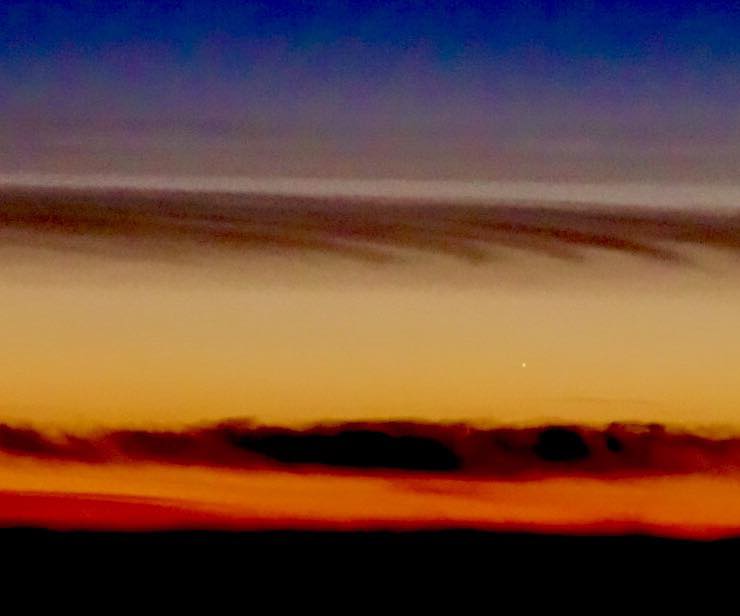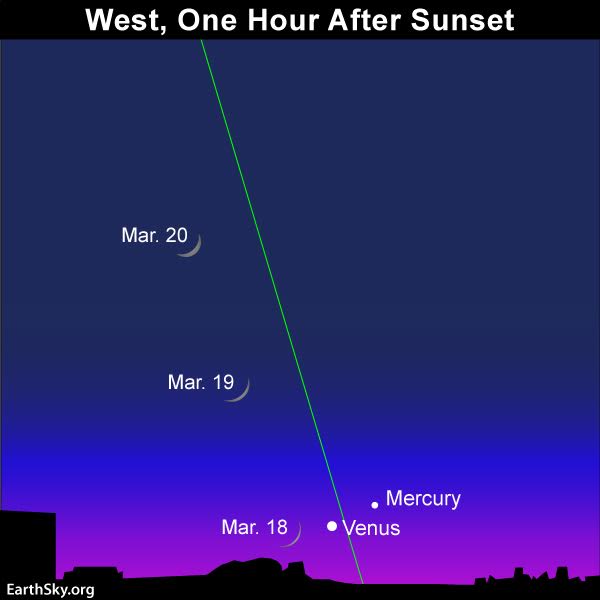Just after sunset – February 16 to 18, 2018 – try to catch the waxing crescent moon and the planet Venus. As seen from across Earth, they’ll sit low in the west, in the sunset direction, shortly after the sun goes down. And they’ll quickly follow the sun below your western horizon! Here are some tips on catching them.
The moon and Venus rank as the brightest and second-brightest celestial objects in our nighttime sky. And yet it’ll take a heroic effort to catch Venus after sunset now, especially with the eye alone.
The moon will be tough on February 16, but easier on February 17 and 18.

Binoculars and telephoto camera lenses will make the view easier to catch.
You’ll need an unobstructed horizon in the direction of sunset.
On February 17 and 18, the lighted portion of the lunar crescent will be pointing toward Venus. If you get a photo, please do submit it here.

The moon turned new on February 15 at 9:05 p.m. UTC, causing a solar eclipse. New moon marks the moon’s official transition out of the morning sky and into the evening sky.
After sunset on February 16, we expect the moon to be easier to catch from the world’s Western Hemisphere (the Americas and Hawaii) than the world’s Eastern Hemisphere. That’s because the moon will be farther east of the sun at more westerly longitudes, so it’s likely to stay out longer after sunset.
For the same reason, the American West Coast has some advantage over the American East Coast for spotting the young moon. From the western United States, Venus will set about 40 minutes after sunset and the moon will set about one hour after sunset. Click here to find out when the moon sets in your sky, remembering to check the moonrise and moonset box. If you live in the U.S. or Canada, click here to find out when both the moon and Venus set in your sky. It’s possible that you might catch the moon and not Venus after sundown.
The moon will continue to move eastward of the setting sun for the rest of February 2018. Day by day, the moon will stay out longer after sunset until the full moon lights up the sky all night long on March 1 to 2.
Venus, meanwhile, will be edging eastward from the setting sun, too, but more slowly than the moon. When will it become easy to glimpse after sunset? Maybe by the end of this month. Maybe not until early March. Just after mid-March, though, you’ll have another shot at the moon and Venus. See the chart below.

Venus will continue moving eastward from the sunset until it reaches its greatest eastern elongation in the evening sky on August 17, 2018.
Bottom line: After sunset on February 16 to 18, 2018, you might (or might not) catch the moon and Venus near the sunset point on the horizon at evening dusk.











